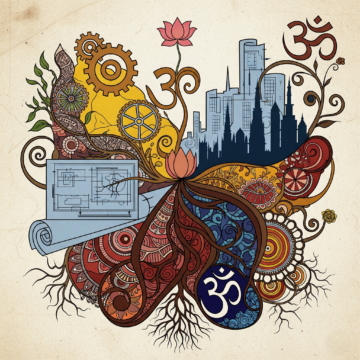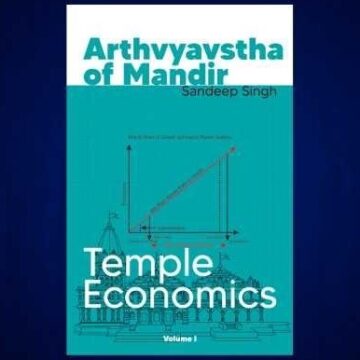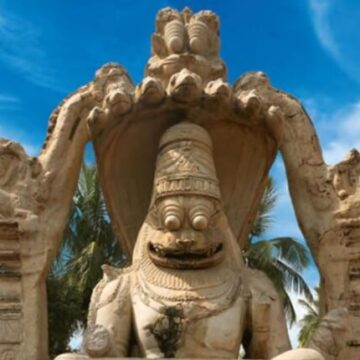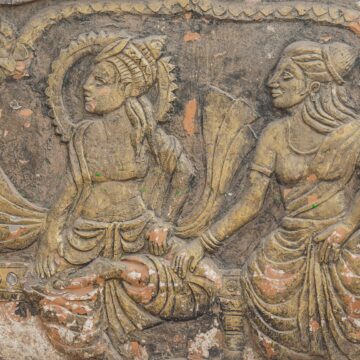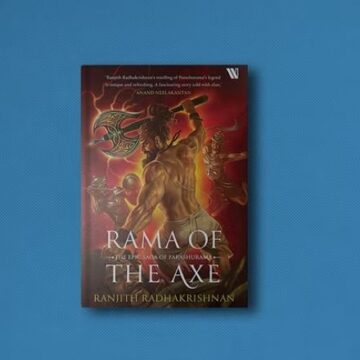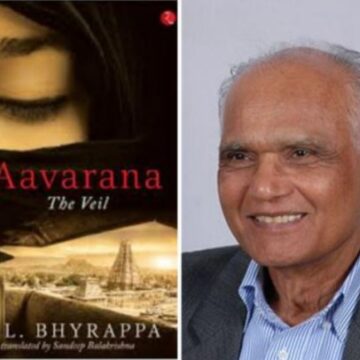S.L. Bhyrappa’s life was a dialogue between art and existence, where suffering became insight and truth found voice through story. From a childhood scarred by loss to a literary career of rare depth, he turned pain into philosophy and realism into revelation. Even in his final words, he taught us that death too can be an act of grace, and meaning, the highest form of art.
Tag: <span>dharma</span>
Dharma and Development : A Civilizational Balance
When development is not rooted in culture, a nation is reduced to just a geographical landmass. Development and culture are not mutually exclusive in the Indian civilizational context. Sanatana Dharma doesn’t ask us to choose between development and devotion to faith — it asks us to integrate them. Its Purushartha framework enables human fulfillment in every aspect of life, with Dharma as the guiding principle. From the Ram Mandir to the Kumbh Mela, what critics dismiss as distractions are often engines of economy, culture, identity, and belonging.
The Limits of Equality: A Dharmic Appraisal of Modern Political Theology
Modernity universalizes Enlightenment ideals of equality, recasting Dharmic order as moral failure. But in Dharma, justice lies not in sameness, but in harmony—each being acting in accordance with its Svabhāva and Svadharma. The caste system, far from being a hierarchy of worth, was a framework of reciprocal duty, now misunderstood and maligned through colonial and liberal lenses. True reform lies not in dismantling tradition, but in reclaiming its wisdom with renewed understanding.
‘Temple Economics’ by Sandeep Singh – A Review Janhavi Naik
Sandeep Singh’s 'Temple Economics' explores the economic systems around Hindu temples with meticulous detail. Divided into four parts, the book covers the history, destruction, and potential restoration of temple economies, emphasizing their cultural and economic significance.
Vegetarianism, Animal Cruelty, and Slippery Discourses
In this article, Dr. Pingali Gopal explores the unequal and complicated relationship between humans and animals, delving into the complexities of meat consumption, animal abuse and the varied definitions and perceptions surrounding them. The author contrasts the extensive use and exploitation of animals in the modern world with perspectives from Dharmic traditions. He presents the views of Swami Vivekananda and Ramana Maharishi on the subject to illustrate the nuanced stance of Dharma on the subject.
Disarming Propaganda: Some Lessons on Survival, Revival, and Hope
Professor Vamsee Juluri dicusses the impact of media during Indian elections and the resurgence of Hindu culture, tackling issues of propaganda and polarization. He emphasizes the significance of media literacy, cultural ownership, and constructive engagement to preserve cultural integrity. His insights cover disarming propaganda, post-2024 Election strategies for survival and revival, and details about the new edition of "Rearming Hinduism."
Śaṅkara Charitam – a retelling – Chapter 15 – Guru Parampara
Chapter 15 of Śaṅkara Charitam, titled Guru Parampara, takes us through the experience of Śaṅkara taking his leave from his Guru Govinda Bhagavatpāda and embarking on his journey to Kasi. The Guru Parampara, the lineage of the Gurus who preceeded Śaṅkara, is explored.
Eternal Love Story of Prabhu Shri Rama and Mata Sita
The Ramayana is an epic of unparalleled significance in Hindu mythology. It is rightly and widely regarded as a story that epitomizes righteousness, duty, sacrifice, and devotion. At its heart, however, lies the eternal love story of Prabhu Shri Rama and Mata Sita; a divine saga that transcends the boundaries of time and serves as the very essence of the epic.
“Rama of the Axe” by Ranjith Radhakrishnan – A Review
A comprehensive review of "Rama of the Axe" by Ranjith Radhakrishnan, and his treatment of plots and characters beyond what is mainstream, including but not limited to the protagonist Bhagwan Parashurama and the antagonist Kartyavira Arjuna.
Aavarana (The Veil) By S. L. Bhyrappa – Translated by Sandeep Balakrishnan – A Review
Rohan Raghav Sharma reviews SL Bhyrappa's "Aavarana - the veil" translated from the original Kannada into English by Sandeep Balakrishnan. He explores the multi-layered plot, the flow of the story, and evolution of the characters while also touching upon salient points of criticism along with his own critique of the book.


